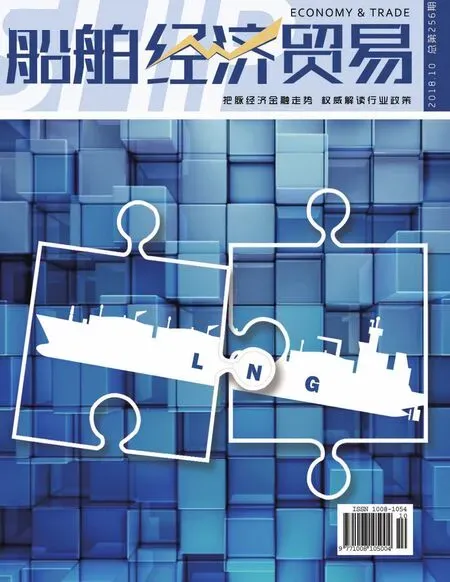Enhancing Comprehensive Capability of LNG Carrier Industrial Chain to Ensure Implementation of National Clean Energy Strategy
By Song Wei, LNG Carrier Chief Technical Expert of Hudong Zhonghua Shipbuilding (Group) Co Ltd

The 170000 m3 large LNG carrier market has warmed up since early 2018.as of August, global new LNG carrier order of above 170000 m3 had reached 35 ships this year. As “Pearl Ship Form”,the LNG carrier order surge attracted domestic and foreign media to compete for coverage and drew wide attention to shipbuilding circles. In the wave of market minor spring, Korean shipbuilding companies became the only beneficiary,while Chinese and Japanese shipbuilding companies did not obtain any order. How to fully analyze this situation and how to improve the construction capacity of LNG ships in China? It should be treated comprehensively from the aspects of the strategic guarantee of energy security in China, the competition situation of LNG shipbuilding enterprises and the promotion of comprehensive capability of the industrial chain.
Relying on Independent LNG equipment,Safeguarding National Energy Security
Since the 19th National Congress of the Party, China has been accelerating air pollution control, fighting hard to win the blue sky defense war, and building a beautiful China. The steady progress of environmental protection policies has promoted the rapid transformation of the energy structure towards clean energy.In 2017, China imported 37.8 million tons of LNG, becoming the world's second largest importer of LNG. The consumption of natural gas reached 238.6 billion cubic meters. The proportion of natural gas in the primary energy consumption structure increased to 7.3%, and the dependence on external natural gas exceeded 38%. Since the beginning of 2018, China's natural gas import growth rate has been high, the first seven months of this year increased by 34% compared with the same period a year ago. It can be expected that in the next five years, China will become the world's largest importer of LNG.
In August 2018, the CPC Central Committee and the State Council issued important instructions on the development of the oil and gas industry from the national strategic height, and demanded that the layout of oil and gas must be “available,transportable, and affordable”. This requirement brings rare opportunities and severe challenges to related industries.
A large number of imports of LNG can not be separated from the LNG carrier as the "blood transfusion pipeline". At present, the import of LNG in China is still heavily dependent on the LNG ships built by foreign countries, and its external capacity dependence is over 60%, which has a huge hidden trouble of transportation safety. Once foreign shipowners or shipbuilding enterprises stop providing capacity for political or economic purposes, China's LNG imports will be "stuck". The energy security of a big country cannot be bought with money.In order to ensure the safety of energy transportation and maintain an invincible position in oil and gas trade, China cannot do without the support of independent LNG equipment.
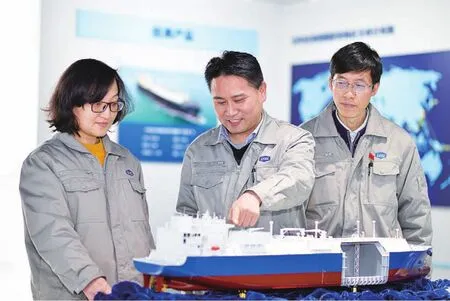
China has urgent demand for independent LNG carriers in future. By the end of 2017, China had built 17 LNG receiving stations, distributed in 11 coastal provinces and municipalities, with a total receiving capacity of 50.4 million tons per year. Currently, a number of receiving stations are under construction and are scheduled to start production around 2020, when the total receiving capacity will reach 77 million tons per year. It is estimated that by 2030, the planned new receiving capacity will be 37 million tons per year, and the total receiving capacity will exceed 100 million tons per year. In terms of LNG logistics quantity matching these new receiving stations, the next 10 years will require an additional LNG capacity of about 50 million tons per year. Taking a 174,000-cubic-meter LNG vessel as an example, the capacity of this type of vessel between Australia and China can reach an average annual capacity of 1 million tons per year, and 500,000 tons per year between the United States and China. In the next 10 years,China's LNG receiving station needs 50-100 LNG carriers, which means a wide market space and a very severe challenge for our country's LNG shipbuilding enterprises and marine equipment industries.
Chinese Shipbuilding Enterprises Catching Up to Break Through"Encirclement and Suppression" to Get a Firm Foothold
At present, the large LNG carrier market is actually in a "semi-monopoly"state. There are no more than 13 shipbuilding enterprises with construction performance worldwide, of which only 8 hold orders and are still active. Korea has three, namely Daewoo Shipbuilding Ocean, Hyundai Heavy Industries and Samsung Heavy Industries, accounting for about 70% of the market share, while Japan has four, namely Mitsubishi Heavy Industries, Kawasaki Heavy Industries,Imbari and Japan Marine United,accounting for about 20% of the market share. In China, only Hudong Zhonghua Shipbuilding (Group) Co., Ltd. has entered the LNG shipbuilding club, accounting for about 10% of the market share.
Korea's three big shipbuilding companies, dependent on leading advantages of rapidly changing technology and scale advantages of high market share,has always had the idea of squeezing out Japanese and Chinese shipbuilding companies, thereby monopolizing the market. Up to now, Korean shipbuilding enterprises have implemented the strictest system of blockade and confidentiality in the fields of LNG ship technology,management and personnel, and once adopted dumping and suppressing tactics in price, which prevented Chinese shipbuilding enterprises from expanding their customers and squeezing their living space. Hudong Zhonghua was once mired in the joint "encirclement and suppression" of the three Korean shipbuilding companies. It is gratifying that Hudong Zhonghua has been grinding “one sword in ten years”, and through the independent R&D design and construction of the third generation LNG ship, has fully grasped the core technology, and formed the ability of sustainable innovation and development.It has successfully delivered to domestic and foreign shipowners 19 LNG vessels of four models. The latest undertaking of the fourth generation of LNG ship form is synchronized with Korea, technical indicators have reached the international advanced level, construction quality can be compared with the Korean shipbuilding enterprises. In the international LNG shipbuilding market, Hudong Zhonghua has got a firm foothold.
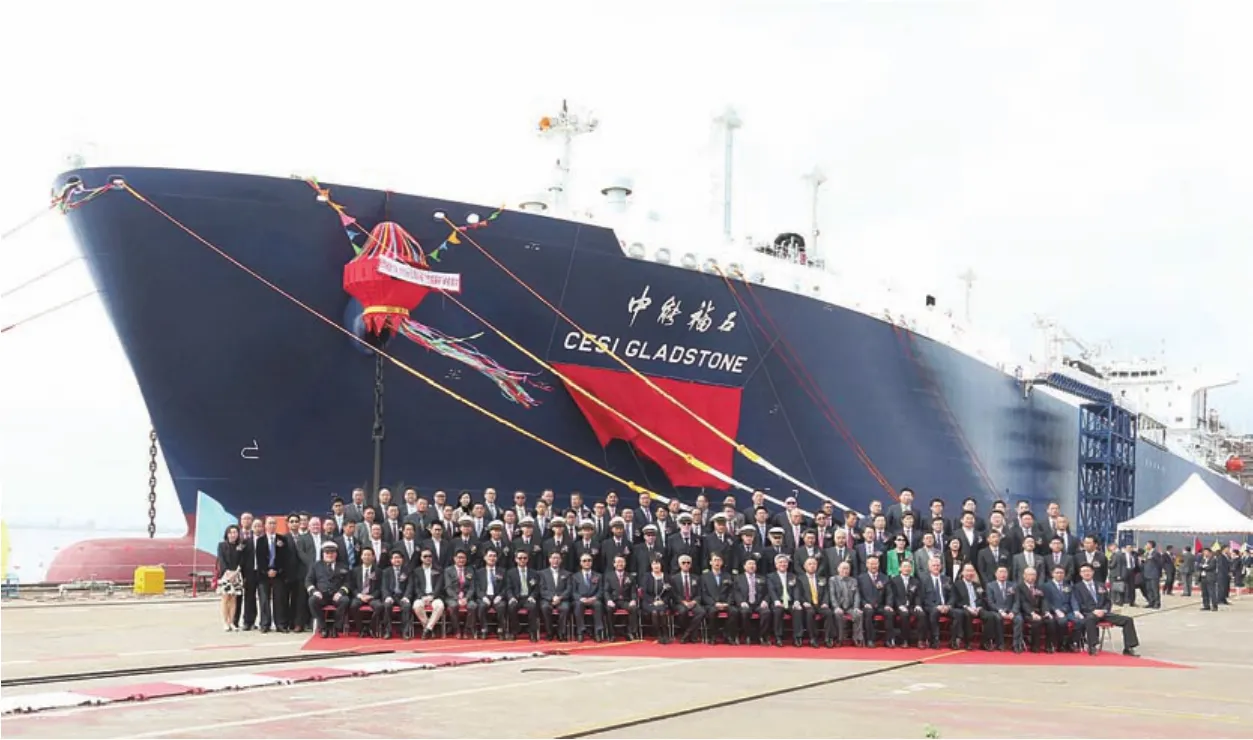
In June 2017, Hudong Zhonghua won a marathon competition with Samsung Heavy Industries, securing an order for four 174000 cubic meters of LNG ships using fourth-generation technology for Russia's YAMAL project,valued at more than RMB5 billion. In October 2017, Hudong Zhonghua again broke the Korean shipbuilding enterprise monopoly and won an order from an European shipowner for two 174000 cubic meters of LNG floating storage and regasification unit (LNG-FSRU). In February 2018, Hudong Zhonghua won another round of fierce confrontations,beating Hyundai Heavy Industries to secure the world's ever largest 18600 cubic meter LNG filling vessel order.Hudong Zhonghua successful rushing out of the Korean shipbuilding enterprises"encirclement and suppression" fully demonstrated its strong strength in the field of LNG shipbuilding.
According to relevant data, 52 LNG and LNG-FSRU orders have been concluded globally since the beginning of 2017. Ordered taken by Hudong Zhonghua have accounted for some 11%of the global market. The company's LNG carrier capacity is basically fully utilized,and there is no accommodation of ship delivery around 2020, so it is strong in will but weak in strength for the wave of orders since early 2018.
Gap with Korea But Not Out of Reach.
Faced with the "containment" of Korean shipbuilding enterprises, China's shipbuilding enterprises have made some achievements, but we should also face up to the existing gaps and challenges. In order to better compare the gaps between Chinese and Korean shipbuilding companies in the LNG shipbuilding, we will analyze the construction capacity,construction quality and construction cycle from three aspects: construction capacity, construction quality and construction cycle.
In terms of construction capacity,there are gaps between Chinese shipbuilding enterprises and Korean shipbuilding enterprises, but they are not out of reach. By the time the first 147000 cubic meter steam propulsion LNG ship was delivered to Hudong Zhonghua in 2008, the Korean shipyard had built the second generation of Q-FLEX and Q-MAX low-speed propulsion ships equipped with reliquefaction units. At that time, there were one generation gaps between Chinese shipbuilding companies and Korean shipbuilding companies. In the subsequent 10 years,Hudong Zhonghua has done all it could to catch up and quickly broken through the difficulties of developing the secondgeneration, third-generation and fourthgeneration LNG ships. The fourthgeneration LNG carrier launched in 2017 has synchronized with the Korean shipbuilding enterprise products, and the gaps were very small.
In terms of construction quality,Chinese shipbuilding companies have kept pace with Korean shipbuilding companies. For LNG carrier film cargo tank built by Hudong Zhonghua, singledeck helium test leak points were no more than 5, reaching the world first class level. In 2017, Merchant Mitsui O.S.K. Lines rated the world's six LNG shipbuilders in a comprehensive ranking,with Hudong Zhonghua in third place.
In terms of construction cycle,Chinese shipbuilding companies must face up to gaps, as construction cycle has become the bottleneck restricting Chinese shipbuilding companies’ competition with Korean shipbuilding companies.Chinese shipbuilding companies have long construction cycle, which not only consumes more than half of the advantage of low labor cost, but is also unfavorable to scrambling for orders as anxious customers can't wait. In order to change the present situation, our shipbuilding enterprises are not only required to practice their internal work,but also the whole industry is required to improve the level of cooperation.
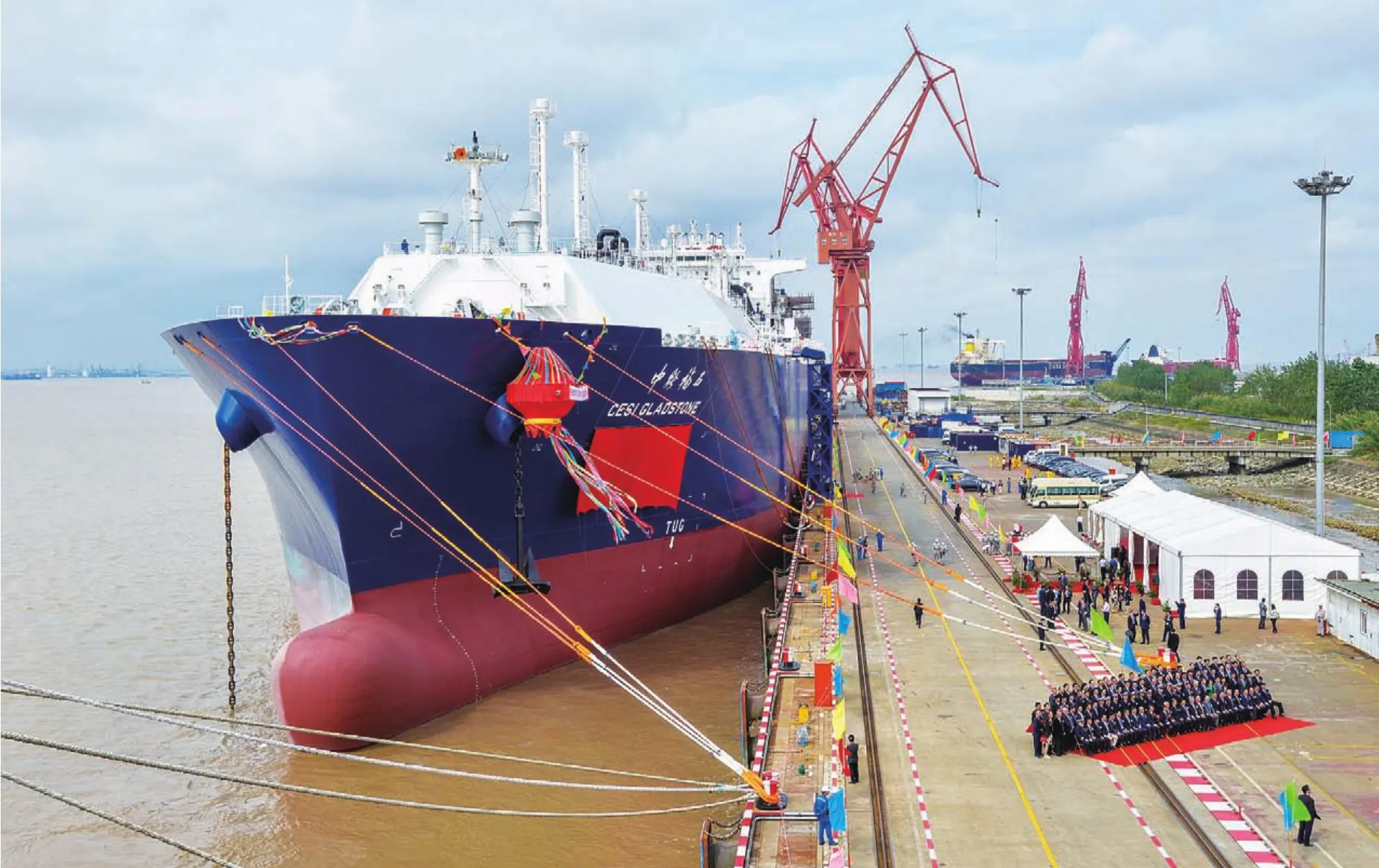
Weak Marine Equipment Capacity Seriously Reducing the Competitiveness of LNG Carriers in China
For China and Korea LNG ship construction level gap, in addition to the capacity gap between the shipbuilding industries, there is a deeper level of gap of shipbuilding industry marine equipment environment. The development of highend manufacturing industry can not be separated from high-end materials,the localization of mechanical and electrical equipment and the support of service capacity, requiring the whole industrial system to work together,converge into a joint force, form a virtuous cycle model, and create the advantage of the strong are strong.
Korean shipbuilding industry has a very complete industrial supporting system. In special materials and mechanical and electrical equipment needed in LNG ship, such as polyurethane foam board, stainless steel corrugated plate, glass wool, rigid insulation, flexible insulation and other tank enclosure system components,special cryogenic valve parts,cryogenic pipe insulation materials,dual-fuel engines, low-temperature gas compressors, re-liquefaction equipment and other aspects, Korea has formed a local supporting capacity.This also makes low transport costs of Korean LNG ship marine equipment,short delivery time, because the relevant supporting enterprises can provide on-call installation and commissioning services. Thanks to a sound supporting system, Korean shipbuilding companies can not only enjoy preferential purchasing prices for building LNG ships, but also enjoy rapid distribution and seamless docking service support. For example,when Korean shipbuilding companies encounter material updates and equipment modification problems on the site, they can be resolved in a short period of time. These advantages maximize the continuity of shipbuilding production and shorten the shipbuilding cycle. At the same time, this kind of industry cooperation can also promote the complementary resources between industries and form a strong competitive force in the industry. Korean shipbuilding enterprises have obtained a large number of LNG ship orders, which has led Korean marine equipment enterprises to give full play to their advantages of scale effect and become the marine equipment centers of global LNG ships, thus further reducing costs and, in turn, "feeding" this kind of marine equipment dividends to the shipbuilding enterprises and helping shipbuilding enterprises further enhance their competitive advantages.In 2018, Korean shipbuilding enterprises in the LNG ship market“solo thriving” is just the reflection of the industry coordinated development and the overall play of the advantages of the formation of joint efforts.
On the contrary, China is very weak in marine equipment supply capacity of special materials and electromechanical equipment for LNG ships with very few marine equipment enterprises available, and the industry has no system at all. Especially in the long-term delivery of dual-fuel engines, cryogenic valves, cryogenic gas compressors and other heavy electromechanical equipment, the supply capacity is seriously inadequate.
Chinese localized equipment supply rate of LBG carriers built by Hudong Zhonghua is less than 25%,a lot of electromechanical equipment and cryogenic materials can only be imported from Europe, US, Korea and Japan, featuring high prices and long ordering cycle, precommissioning service suffers from constrains by numerous holidays in Europe. When site construction meets the problems of material and spare parts supplement,it falls into a long wait, resulting in intermittent production, difficult to improve efficiency, not only prolonging the shipbuilding cycle, but also seriously restricting the competitiveness of LNG shipbuilding enterprises in China.
Actively Develop Marine Equipment systems,Industrial Cooperation Boosts LNG Carrier Made in China
China has independent construction capacity of LNG carriers,but it does not match the position as the future global largest LNG importer.In the new era and new journey of building a powerful marine country and a beautiful China, it is necessary to strengthen and develop the independent LNG shipbuilding industry system to ensure the transport security of energy import.
At present, China's LNG carrier industry is small in scale, lack of marine equipment system, industry development endogenous power is weak, requiring active guidance of the government.
Meanwhile, the construction of 50-100 large LNG ships will bring RMB37-72 billion worth of marine equipment demand, hence very large market space. The government should make great efforts to guide capital into the LNG ship marine equipment industry, and promote the formation of a sound industrial marine equipment system through scientific research support, tax preference and first-set subsidies, so as to make up for the"short board" of the development of China's LNG shipbuilding industry and form the overall advantage of industry coordination.
China has great potential and good foundation to develop the LNG industrial chain. If under the guidance of national policy, all kinds of capital enter the marine equipment industry, perfect the industry system step by step, it will push the construction ability of Chinese LNG carriers to a new level in order that China clean energy can be bought and transportable.
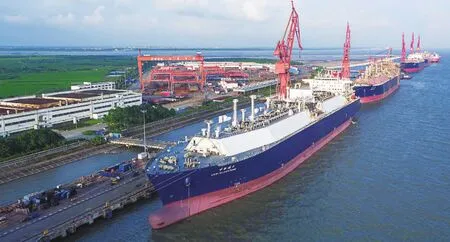
- 船舶經(jīng)濟(jì)貿(mào)易的其它文章
- Jiangnan Shipyard Building LNG Industrial Chain
- With Right Wind, Raising the Sail of Blue Economic Development
- Stories Behind “Xue Long 2”Joint Design
- 淡季不淡行情穩(wěn)中向好2018年9月中國(guó)沿海(散貨)運(yùn)輸市場(chǎng)分析
- 需求平穩(wěn)增長(zhǎng)航線走勢(shì)分化2018年9月中國(guó)出口集裝箱運(yùn)輸市場(chǎng)分析
- 原油交易減少運(yùn)價(jià)總體上漲2018年9月世界油貨運(yùn)輸市場(chǎng)分析

